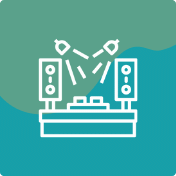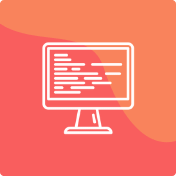3D/Augmented Reality Design

Personal Connection
- Are you excited to learn the latest in programming?
- Do you tend to keep up with the latest technology?
- Are you at your best when you are working in a team environment?
- Do you like creating art and graphics?
- Would you love to be at the forefront of a new industry?

Other Connections





STEM Connection
AR headsets and software have many uses in healthcare:
The mirrorworld is a massive project to build a digital Earth:
Robotic eyes help bring better eye tracking tech for hands-free electronics and AR/VR systems:
Augmented shopping brings new ways to online shop with confidence:
Journeys to Becoming an Augmented Reality Designer
Chris Dun is a successful AR developer working full-time at Engine Creative as a senior digital developer. His day-to-day work includes creating AR scenes based on the work product of other designers and creatives, researching new advancements in the field and integrating them for various clients, and collaborating with a team to develop new interactive experiences. But breaking into the field took motivation and focus. His high school education provided no foundation in any of the latest technologies such as AR or VR programming or design. If Chris had enrolled or had the opportunity to enroll in math or science classes, he could have gotten early hands-on experience alongside a strong academic foundation to prepare him for a college curriculum or self-driven online learning to get into the profession. To Chris and many in the latest technology fields, experience is the top qualification above formal education. “While formal education is a great thing to have on your CV [or résumé], it’s not the final word in getting the job you’re looking for – often real-world experience bears more weight.”
AR designers and developers have to focus on what the user sees and how they interact with a product, so their programming experience must include “a fundamental understanding of design and UX [or user experience].” This comes with the daunting task of staying current on the latest developments in AR and your specific AR systems as the field is constantly changing. While this is true of programming in general, AR is changing at a significantly faster pace. “Knowing how an end user expects something to work on their chosen device is increasingly important with the lines between platforms blurring.”
High school and college math and science classes alongside clubs, internships, and programming competitions are all great ways to build experience and skills. In a field that is always changing and has no standard programming language, it’s important to build a widely applicable skillset. “I’m a big believer that learning other [programming] languages is one of the quickest ways to progress your ability to recognize the most appropriate way to approach a project from a code perspective.”
For Chris and others looking to pursue a career as an AR designer, the journey can begin in high school. If your high school offers relevant clubs, such as a computer science club or a Technology Student Association (TSA), you can join these to gain hands-on experience with programming. Check for local or regional programming classes, workshops, and competitions. Many colleges and universities host “hack-a-thons” to allow young coders and programmers opportunities to build and share products and protoypes in a short amount of time. Many of these projects are shared on GitHub as a place to host a personal portfolio. “If you’re looking to sharpen your abilities, create a project and open-source it on GitHub, or join in the development of an existing one. It’ll give you exposure to working with other people’s coding styles and force you to ask yourself whether other people will understand yours.” For those looking to focus on the art and design skills and experience, consider keeping a portfolio of artwork on a website like Wix.
Since AR design is such a new field, many colleges and universities don’t offer degrees in it. Instead, you may pursue a relevant bachelor’s degree in computer science, art, math, psychology, or a related field. Augmented reality design is a broad field, so you should choose a degree that complements what you want to do after college. For example, if you want to design assets used in graphical overlays, a degree in art may be a good choice. On the other hand, if you want to program AR scenes, a degree in computer science may be a better choice.
Read more about Chris’s career here:
Read about an artist’s journey to becoming an AR designer:
Marco Ryan is a respected artist, successfully and uniquely making the shift to AR designer. When the terms virtual and augmented reality gained traction within the last decade, Marco took on learning a new language (the programming language C#) and skillset to dive into the next level of his art. “I try to think of learning new things as adding skills to your arsenal and the more skills you possess the greater you can expand on your ideas.” Marco’s path has been one full of self-motivation and dedication to continual learning and growth at the intersection of immersive art and technology.
Before working in AR and VR, Marco was primarily self-taught, learning art and illustration, storytelling and animation, and even programming and game design all on his own. He started out using the game engine, Unity, with the programming language, C#, to develop AR scenes. “The beautiful age we live in makes it so much easier to learn new skills online.” For those following in Marco’s footsteps, he says, “From my experience, don’t confine yourself to one specific medium and try practicing a different skill or technique every day.”
Many AR designers work in teams, with some members designing assets and others developing scenes, but Marco handles both the artistic and technical aspects from inception to release. For a typical project, Marco spends roughly a month to create a complete experience. He balances personal projects with commercial work that meets the needs of clients. “I work with a variety of organizations generally consulting, providing creative direction and in most cases building the experiences.”
Overall, Marco’s career is an excellent example of how students can specialize in either artistic or technical aspects of AR design and follow a career path that isn’t through a degree program if that fits their professional goals. When choosing your path, remember Marco’s advice: “The more knowledge you have, the greater you can push the boundaries of your creative expression.”